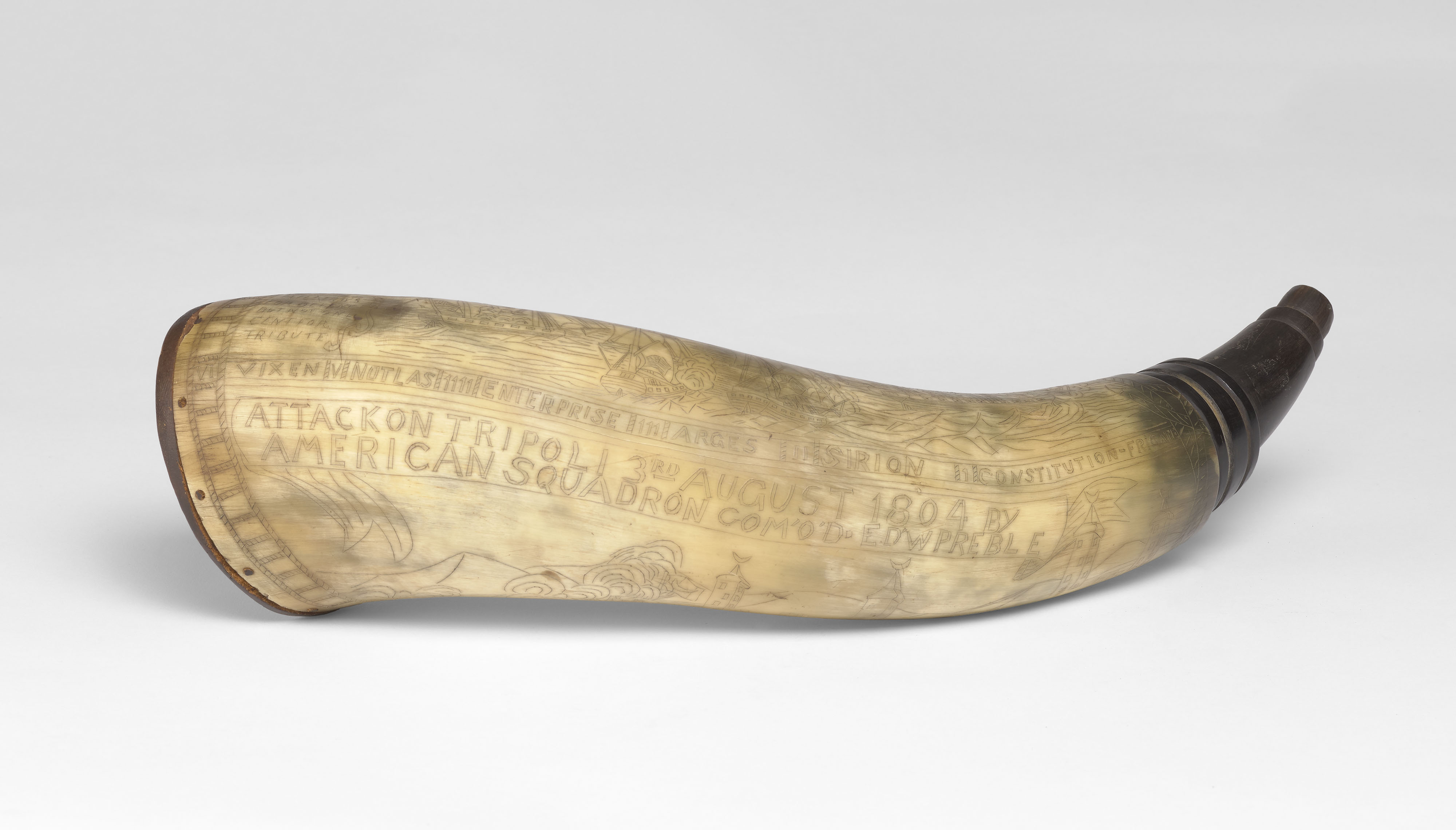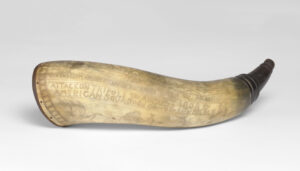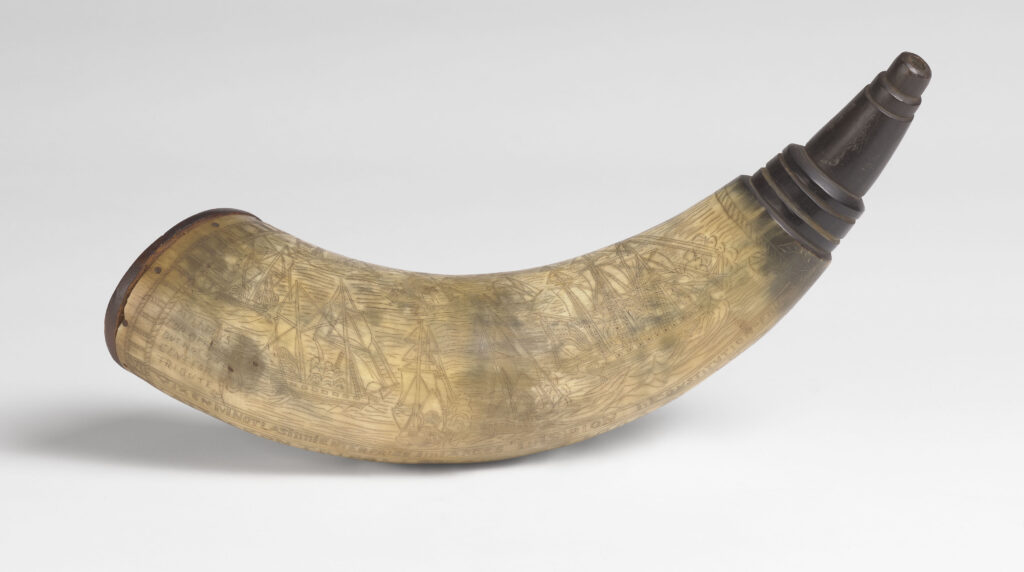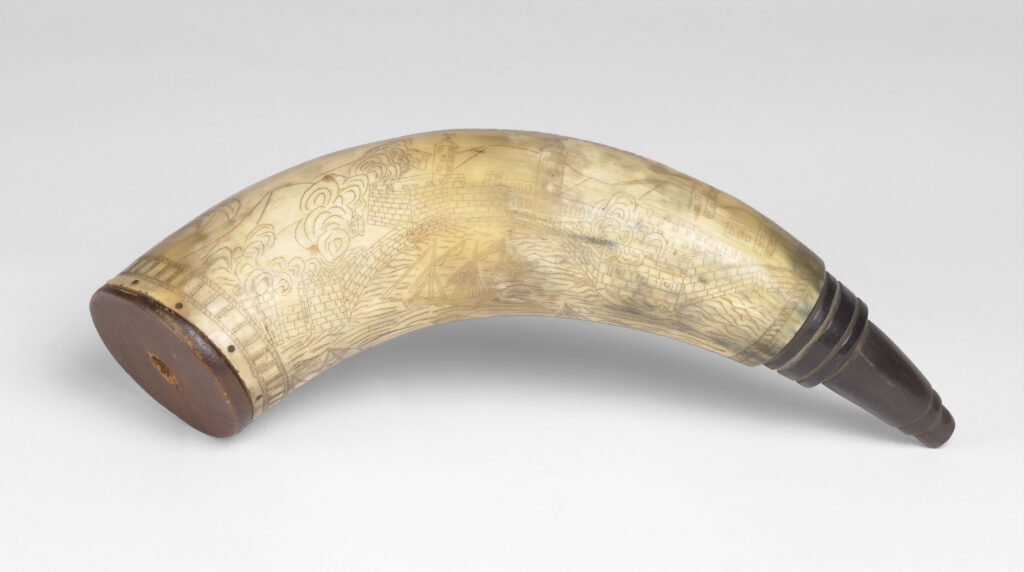



Engraved Powderhorn Showing Bombardment of Tripoli
Powder horns were used to carry gunpowder and helped keep the gun powder dry. The wider end was used to refill the powder and the narrower end was used to dispense it. By the War of 1812, paper cartridges were given to musket-wielding sailors but the Marines, using rifles to shoot from the tops, were given powder horns and loose rifle balls. Horns were also used to carry the finer power that primed the cannons and howitzers. The size of this specific power horn indicates it may have been used to prime long guns or carronades.
This power horn illustrates the bombardment of Tripoli during the First Barbary War. The inscriptions include the August 3, 1804, date of the first attack, the names of the ships assembled under Commodore Preble, and the phrase “Millions for defense but not one cent for tribute,” highlighting how many Americans strongly supported the war rather than paying pirates for peace.
The ships and forts engraved on the horn depict a combination of the first battle and the February 1804 scuttling of the Philadelphia. Both took place outside of the fortified walls of the Pascha’s castle, but the scuttling, which was to prevent Tripoline forces from using the ship in future battles, was led by Lieutenant Stephen Decatur and only the Intrepid and Syren were present. Aside from the presence of the entire Mediterranean Squadron, this inscription bears resemblance to the 1805 John Guerrazzi engraving “The Burning of the American Frigate the Philadelphia in the Harbour of Tripoli.”
Date Created
19th century
Medium
Horn (Ox or Cow)
Dimensions
[W]5.9375 in. [L] 19.6875 in. [Diam] 4.75 in.
Catalog Number
1728.1
Credit Line
USS Constitution Museum Collection.
Terms of Use

This work is licensed under a Creative Commons Attribution-NonCommercial-NoDerivs 3.0 Unported License